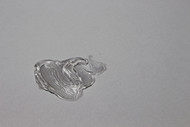How to Use Liquid Silicone
Dec 11th 2023
Liquid silicone is the form that most types of silicone sealant come in for easy application. In its liquid form, silicone sealant can easily adhere to multiple surfaces and create a strong seal between items.
However, to get the desired result, you’ll need to know how to use liquid silicone sealant properly. Here’s everything you need to know to start your liquid silicone project.
The Basics of Liquid Silicone
Liquid silicone is also known as silicone liquid or liquid silicone rubber (LSR) material. It’s an advanced, versatile material with a wide range of applications across various industries. Silicone rubber has numerous unique properties that make it a preferred choice of materials in certain manufacturing processes.
To fully understand the basics of this material, we must take a closer look at its composition. This blend of silicone, oxygen, carbon, and hydrogen is what results in a flexible and heat-resistant material.
One key characteristic of liquid silicone sealant is its liquidity, which allows for precise application and molding. This attribute is particularly advantageous in creating fine-detail products. The ability to capture intricate designs makes it an excellent solution in situations that require precision. One example is the production of specialized silicone rubber parts.
Whether used as liquid silicone glue or in the production of LSR parts, the material’s adaptability and fine detailing capabilities make silicone liquid a go-to solution for various industrial needs. As we dig a little deeper into the traits and characteristics of liquid silicone rubber, we’ll discover some insights about optimizing it for specific applications.
Room Temperature Curing Process
The room-temperature curing process for liquid silicone is a key advantage, which is different from manufacturing applications. Unlike more traditional curing methods that require elevated temperatures or continual air flow, liquid silicone can cure at a normal room temperature range. This reduces overall energy consumption and enhances the silicone material’s properties, ensuring a high-performance end result.
To initiate the room-temperature curing process, apply the liquid silicone to the desired areas and ensure even coverage. The material’s self-leveling properties will help achieve uniformity, enhancing its adaptability to different surfaces and silicone molds. Once applied, cure silicone rubber at room temperature. There is no need for external high heat sources or high temperatures.
Monitoring the curing process is essential to achieving optimal results. Factors such as humidity, ventilation, and the thickness of the applied silicone will influence the curing time. Be sure to check the material for firmness and tackiness to gauge its progress.
Fine Detailing and High-Performance Considerations
Liquid silicone’s viscosity allows for meticulous application, capturing intricate designs with precision. The material’s self-leveling characteristics help ensure that molds are filled without imperfections.
In high-performance scenarios, liquid silicone exhibits exceptional endurance, flexibility, and adaptability to different environments. Its ability to maintain structural integrity under stress and provide durability makes it a top choice for applications demanding reliability and longevity.
In highly detailed and high-performance instances, liquid silicone is a versatile material in diverse manufacturing settings.
Best Practices for Silicone Liquid Glue
Silicone liquid glue offers unparalleled bonding strength and flexibility, which distinguishes it from traditional adhesives. Best practices for its application involve scrupulous surface preparation, ensuring the bonding surfaces are clean and dry.
Apply the silicone liquid glue evenly, taking care to avoid excess that may compromise adhesion. Allow sufficient curing time, and adhere to the recommended guidelines for optimal bonding strenth.
Consider the specific needs of the materials being bonded and choose the appropriate silicone liquid glue formulation. Monitoring environmental conditions like temperature and humidity is also crucial to ensure the curing process occurs naturally.
Following these best practices ensures effective and durable bonding with silicone liquid glue.
Techniques for Complex Designs
For complex or intricate designs and situations, begin by employing a well-crafted mold design that can accommodate intricate details. For this, you might consider using multi-piece molds or employing advanced 3D-printing technologies for complex geometries.
Thoroughly degas the liquid silicone to eliminate air bubbles. Employ a slow, controlled pouring technique to prevent air entrapment. Post-curing processes, such as gentle heat application, can further enhance the material’s flexibility and detail retention.
These techniques collectively contribute to the successful realization of more complex designs, making liquid silicone a versatile choice for applications demanding precise molding.
Elevate Your Projects with Liquid Silicone Excellence
Mastering the art of using liquid silicone unlocks a world of possibilities in manufacturing, from fine detailing to high-performance applications. The material’s versatility, room-temperature curing, and adaptability make it a vital tool in various industries.
For quality silicone products and expert guidance, explore the offerings at Silicone Depot. Make sure you have the right equipment for your next job. Let Silicone Depot be your trusted partner in realizing the full potential of liquid silicone.
Browse our selection of premium silicone products today to find exactly what you need for your next project.

